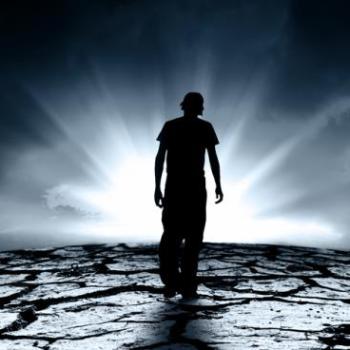Affirming the resurrection doesn’t come easy for many of us. Frankly, many of us find it difficult to celebrate life these days. Holy Saturday, the time of uncertainty and waiting, the experience of suspense and the provisional nature of life, seems a far more realistic assessment of the human and cosmic condition than the bursting forth of new life on Easter. Even devout Christians, reflecting on Easter Sunday, struggle for a realistic and life-transforming message to affirm.
According to Jesus’ first followers, Jesus’ resurrection changed everything, yet the world remained the same. In fact, the first followers of Jesus experienced persecution and martyrdom, and polarized over ritual and doctrine. Still, they trusted that Christ was alive and moving through their lives. They believed that resurrection did not deny the tragedies and injustices of life, but placed them in a larger and more hopeful context. Death in its many forms has been defeated; life abundant is our destiny. In the spirit of the prophet Jeremiah, resurrection gives us a future and a hope.
Resurrection changes lives. The fearful became faithful, and then go out into the world sharing the good news, “Christ is alive.” For the women and men who first experienced resurrection, their teacher transformed their lives before and after the crucifixion. But, resurrected Jesus was more than they could imagine or hope for. Death could not contain him any more than doors and walls. The Risen Jesus was energetic and dynamic in stretching the limits of natural causation. The dead don’t come back to life; corpses aren’t resuscitated. Yet, the Jesus they encountered was neither a revived corpse nor a disembodied wraith; he was a whole person, alive and lively, yet not encompassed by the limits of everyday physical reality. He lived in them, but lived beyond them, as their animating spirit.
Resurrection pointed the first Christians – and persons like us – to a new vision of human and non-human nature and its possibilities, and a larger vision of God’s work in the world. I disagree with supernatural understandings of resurrection: resurrection is not a violation of the cause and effect laws of nature, but a revelation of the deeper energetic realities of life that emerge when the divine and human are in synch, and God’s realm bursts forth “on earth as it is in heaven.” I also disagree with certain liberal pronouncements of resurrection as merely a story made up by Jesus’ followers, describing life’s deeper meaning, or a transformed state of mind. It is all these, of course, and more. There is no future in a literal flesh and bone Jesus or the search for Jesus’ tomb and the bones buried therein. The future is open to amazement and possibility, and the “good faith” of those who shared the first Easter message.
We live in an amazing universe filled with wonders beyond our wildest imaginations. I think Jesus’ resurrection, like the possibility of a virgin birth, comes from this deep down place in which divine and human energy intersect to create a synergetic burst of transformative energy. Resurrection is not restricted to Christians but embodies God’s living, transforming, and energizing movements in all of life. Resurrection is God’s pathway of rebirth and renewal, most dramatically reflected in Jesus’ life, but residing in all things.
Resurrection changed everything, yet everything remained the same. The first Christians experienced persecution and martyrdom, the church itself became a place of both healing and destruction, and our post-resurrection world is threatened by global climate change, demonic and violent expressions of religion found among those who bomb and behead, and the destructive actions of Christianity’s most “ardent” followers who subvert the all-embracing love of Jesus with a religion of rugged individualism, self-interested capitalism, intolerance, war-making and scorched earth politics. Yet, resurrection lives on – an empty tomb and open future beckons, despite the failures of Jesus’ followers.
Still, in our ambiguous world, we can celebrate resurrection and, in the spirit of Wendell Berry’s poem, “practice resurrection.” But, how shall we practice resurrection today? It is not about enlightenment denial or conservative literalism, both paths that lead nowhere. Rather, it is in looking for the Empty Tombs in our world, and seeing within them Open Futures for ourselves and others. It is in bringing forth beauty and hope, especially in the lives children and marginalized and vulnerable persons. It is in resisting the politics of division, coercion, violence, and greed, and learning to live in terms of a beloved community in which all persons can rise to the heights of abundant living. It is about choosing life in the face of death, trusting God’s growing edges, and then practicing resurrection by acts of compassion and healing that will go beyond our lifetimes.
Today, we are called to become resurrection partners, not passive victims or bystanders. We are challenged to take up God’s cause of resurrection living and roll away the stone, imprisoning marginalized and vulnerable people, and open pathways to the future for all creation.
We are called to be God’s celebrative companions – to say “yes” to life in all its complexity, contrast, and beauty, and to rejoice in birth and rebirth. We can practice resurrection with heart and hands. Christ is Risen, today, and every day! Hallelujah!















